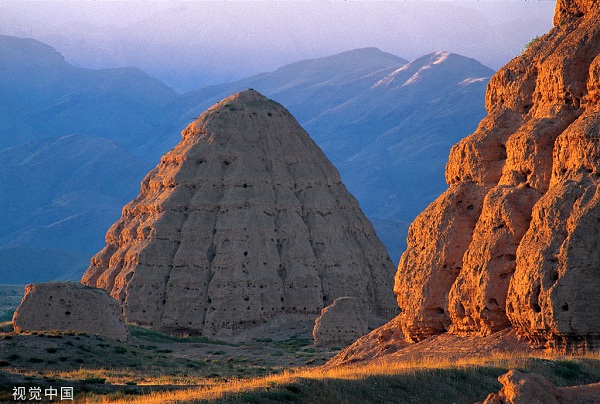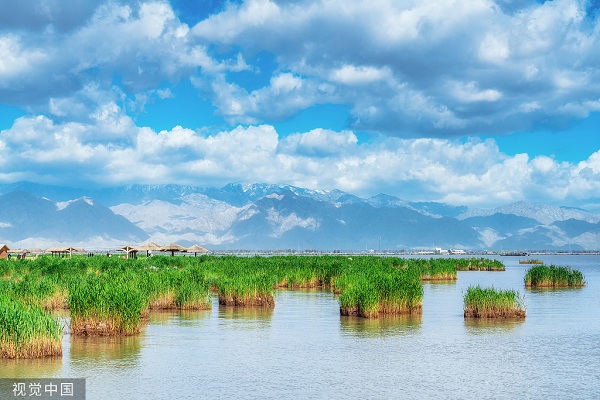Exploring Ningxia's splendid cultural heritage

Ningxia, the region with the most abundant culture south of the Yangtze River, continues to be admired for its resplendent cultural heritage garnered from the long river of history.
During the Tang and Han dynasties (206 BC-907 AD), Ningxia was the main place in ancient China for Eastern-Western trade and transport. Ruins of the Great Wall from the Ming Dynasty (1368-1644) can be found in its eastern region.
Ning is the abbreviation for Ningxia Hui autonomous region. It is located in northwest China, along the middle and lower reaches of the Yellow River. It is one of five ethnic autonomous regions in China, with Gansu bordering to the south, Shaanxi in the east and Inner Mongolia autonomous region in the north. It covers 66,400 square kilometers and has a population of 6.9 million, one-third of whom are Hui minority people.
It belongs to the temperate continental climate zone and has long and cold winters and short, hot summers. January is the coldest month, averaging -10 C to -7 C, and the warmest month is July, when average temperatures range from 17 C to 24 C. Its average annual rainfall ranges from 190 millimeters to 700 mm.
With its unique scenery and customs, and long history, Ningxia has become an attractive tourist area.

Yinchuan, also known as Phoenix City, is the capital of the region situated. It has a history of 1,000 years and is a famous cultural city beyond the Great Wall. It includes the 1,500-year-old Haibao Pagoda, famous Buddhist architecture at the Western Xia Kingdom Pagoda of Chengtian Temple and the imperial mausoleum of Western Xia, which are known as the “Pyramids of China”. Visitors can also see the mysterious Helan Mountain rock paintings, which were created 3,000 to 10,000 years ago by ancient nomads who lived in the area. They depict the history of the splendid Chinese civilization with bold and vivid carving and painting techniques and dazzling colors.

Liupan mountain in southern Ningxia also has picturesque scenery and is known as a “green island”. The Sand Lake Scenic Resort is a national tourism ace for those looking for a place with lakes, dunes, reeds, birds and fish. Between May and September, the lake becomes a paradise for a dozen rare bird species, such as swans, white and gray cranes, black storks and wild geese.

Located on the southern edge of the Tengger Desert, Shapotou is a desert research center founded in 1956 and dedicated to finding ways to prevent sand from eroding the railway lines. You'll see there one of China’s four singing sand dunes. Sliding down it will give you the impression of falling from the sky. The unique geological structure of the place makes the sand resonate, echoing like a giant bell or drum, with clear water flowing in a knee-deep stream at the foot of the dune.
Ningxia is the homeland of Chinese Muslims. When you arrive, please respect the unique customs of the Hui people.
MOST POPULAR
- 1 Chinese cities dominate global science rankings for first time: Nature
- 2 Beijing cautions tourists over Japan travel risks
- 3 Nation offering great opportunities for global biz
- 4 China implements higher-level financial opening-up policies in Hainan
- 5 Policy allowing Guangdong vehicles to travel to Hong Kong takes effect







